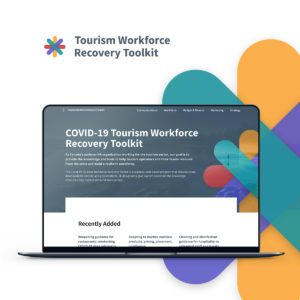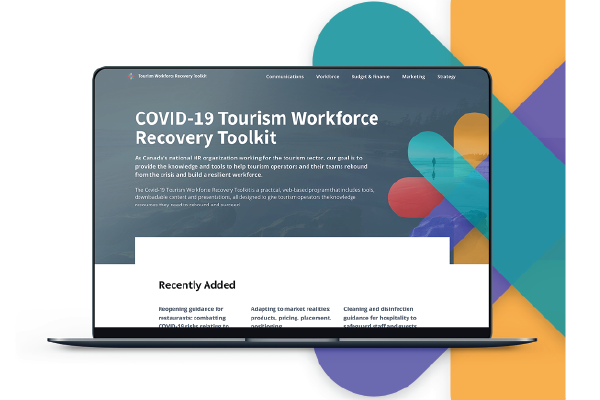 COVID-19 has changed the playing field. For tourism businesses to recover, they will need to quickly react to the profound changes in the economy. Businesses now must align products and services with new markets, respond to new regulations, mitigate risk associated with their supply chain, learn to work with very different staffing situations, recover from significant losses in revenues, and more.
COVID-19 has changed the playing field. For tourism businesses to recover, they will need to quickly react to the profound changes in the economy. Businesses now must align products and services with new markets, respond to new regulations, mitigate risk associated with their supply chain, learn to work with very different staffing situations, recover from significant losses in revenues, and more.
Tourism operators must now revisit their business strategies to align their products and services with new and different markets. The expected focus will be domestic markets (over international markets). This checklist outlines the basics on developing a sales and marketing plan. New and niche markets may have different requirements than previous target markets, therefore a company may need to use different tactics depending on the specific market.
Develop Sales and Marketing Plan for New Markets
Develop an organizational profile, including:
- Name, address, contact information, and principal partners/owners
- Business vision and beliefs (in line with target market)
- What your business is about
- Your business objectives
- Core organizational goals and values
* Remember to develop the profile with the target market(s) in mind. Use plain language and wording that will be understood and meaningful to the market you are trying to attract.
Define overall marketing objective(s), for example:
- Provide premium quality services to domestic markets
- Deliver authentic guiding experiences to Canadian visitors
- Increase sales by 10% over the next year
- Generate $x to sustain operations
* Your marketing objectives should be based on understanding your strengths and weaknesses, the business environment you operate in, and your overall business strategy.
* In difficult economic times, many recommend focusing your objectives on the short term (e.g., next six months), and then revisiting them again later since market conditions are not stable and will change. Focus on objectives that are realistic and achievable.
Describe product/service offerings, such as detailing how the product/service is unique, meets a niche market, and/or is superior to the competition, or specifying the value of the product/service to customers
Outline characteristics of target market(s), such as:
- Proximity to business: where do they live; how far is it from your business?
- Demographic/socioeconomic profile (e.g., age, income, education level, ethnic group, religious affiliation)
- Psychographic profile (e.g., attitudes, values, beliefs, interests, lifestyle preferences)
- Motivations and needs (e.g., family holiday, business event)
Outline threats and opportunities to understand the environment, considering:
- Social/cultural factors (e.g., attitudes, lifestyles, consumer confidence):
- What is the demand for new products or services to address their social needs?
- What about aging populations—what types of accommodations will you need?
- Are there different attitudes (e.g., on gender equity, racial discrimination)? What does this mean for your business and the services you provide?
- Technological factors:
- Need for automation/robotization or augmentation to reduce contact points?
- What about the growing demand for use of ‘big data’, social media, dynamic communications?
- Economic variables (e.g., interest rates):
- Business costs are rising—how will this impact your new business strategy and the products or services you offer?
- What about consumer/visitor disposable income—are they thriftier?
- Ecological, ethical, and environmental considerations (e.g., customer expectations):
- Preservation of culture, heritage?
- Alignment with Indigenous reconciliation considerations?
- Brand management and link to corporate environmentalism/corporate social responsibility?
- Legislated or voluntary waste management, disposal, energy-saving measures?
- Political context (e.g., taxation, policies):
- What is the competition for resources for tourism (over other sectors)? Is tourism a priority for your region and is it supported by government-led initiatives?
- Regulator and legal considerations (e.g., changes in employment law, new regulations):
- What are the new regulations or requirements you must follow?
- What about new labour policies—how do these impact your HR plans and overall capacity?
- Did you factor in the growing interest and demand for workplace health and safety?
Determine your marketing tactics:
- What product or service will you offer? Do you need to change what you have offered in the past?
- What price will you set? What price will this new market bear? How does it compare to your competition?
- What is the best way to promote or reach your target market? Is this different than your past approach?
- What are your sales objectives?
Develop contingency plans for dealing with potential challenges related to:
- New regulations for packaging/labelling/claims
- Shifts in trends or buyers’ preferences
- Environmental issues
- Marketing, advertising, and sales regulations
- Changes in the economy
- New competition
- Negative business image or perceptions
- Staffing issues
Implement plan:
- Set out a schedule of the tasks you need to follow
- Identify the resources (e.g., people, money, tools) needed for each task
- Identify the costs and set a budget for your plan
Download the PDF version of this checklist for free at TourismRecovery.ca. Be sure to also check out the newly launched Tourism Business Builders online resources, available free of charge until September 1, 2021.

